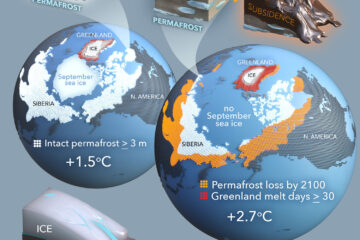Interactions between plant growth and soil nutrient cycling under elevated CO2: A meta‐analysis
Free air carbon dioxide enrichment (FACE) and open top chamber (OTC) studies are valuable tools for evaluating the impact of elevated atmospheric CO2 on nutrient cycling in terrestrial ecosystems. Using meta-analytic techniques, we summarized the results of 117 studies on plant biomass production, soil organic matter dynamics and biological N2 fixation in FACE and OTC experiments. The objective of the analysis was to determine whether elevated CO2 alters nutrient cycling between plants and soil and if so, what the implications are for soil carbon (C) sequestration. Elevated CO2 stimulated gross N immobilization by 22%, whereas gross and net N mineralization rates remained unaffected. In addition, the soil C : N ratio and microbial N contents increased under elevated CO2 by 3.8% and 5.8%, respectively. Microbial C contents and soil respiration increased by 7.1% and 17.7%, respectively. Despite the stimulation of microbial activity, soil C input still caused soil C contents to increase by 1.2% yr−1. Namely, elevated CO2 stimulated overall above- and belowground plant biomass by 21.5% and 28.3%, respectively, thereby outweighing the increase in CO2 respiration. In addition, when comparing experiments under both low and high N availability, soil C contents (+2.2% yr−1) and above- and belowground plant growth (+20.1% and+33.7%) only increased under elevated CO2 in experiments receiving the high N treatments. Under low N availability, above- and belowground plant growth increased by only 8.8% and 14.6%, and soil C contents did not increase. Nitrogen fixation was stimulated by elevated CO2 only when additional nutrients were supplied. These results suggest that the main driver of soil C sequestration is soil C input through plant growth, which is strongly controlled by nutrient availability. In unfertilized ecosystems, microbial N immobilization enhances acclimation of plant growth to elevated CO2 in the long-term. Therefore, increased soil C input and soil C sequestration under elevated CO2 can only be sustained in the long-term when additional nutrients are supplied.


